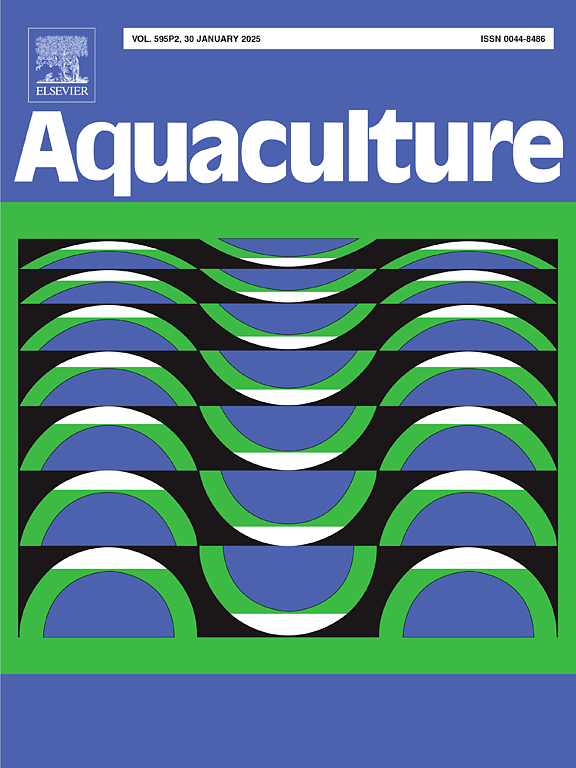Effects of different feeding modes on the growth, reproduction, digestion, stress tolerance, and intestinal microflora of pre-adult red swamp crayfish Procambarus clarkii
IF 3.9
1区 农林科学
Q1 FISHERIES
引用次数: 0
Abstract
In this study, we sought to establish a suitable feeding mode for the aquaculture of pre-adult red swamp crayfish (Procambarus clarkii). To this end, we assessed the effects of feeding crayfish with a traditional feed (TF), chilled fish (CF), or formulated diet (FD)on growth and reproductive performance, digestion and stress tolerance, and the composition of the intestinal microflora. The results revealed that TF-fed crayfish had the best growth performance and digestive system, whereas CF-fed crayfish had the highest reproductive performance and microbial community α-diversity, and FD-fed crayfish had the strongest stress tolerance. With respect to the intestinal microflora of crayfish, we detected similar microfloral compositions among the different treatment groups, with Bacteroidota, Firmicutes, Proteobacteria, and Actinobacteriota being identified as the predominant phyla, and Bacteroides, Citrobacter, RsaHf231, Candidatus_Bacilloplasma, Lactococcus, Tyzzerella, Gordonia, and ZOR0006 predominating at the genus level. However, at the phylum level, there were significant differences among groups with respect to the relative abundances of Bacteroidota and Actinobacteriota, and at the genus level, there were differences in the relative abundance of Gordonia and Tyzzerella. Collectively, our findings indicate that the provision of traditional and formulated diets contribute to balanced growth performance, digestion, and stress tolerance, whereas a diet of chilled fish is conducive to obtaining optimal reproductive performance and microflora α-diversity. However, the mode of feeding appeared to have only limited effects on microfloral community composition in pre-adult crayfish. These findings will provide a theoretical reference for bait selection and the aquacultural production of pre-adult crayfish.
求助全文
约1分钟内获得全文
求助全文
来源期刊

Aquaculture
农林科学-海洋与淡水生物学
CiteScore
8.60
自引率
17.80%
发文量
1246
审稿时长
56 days
期刊介绍:
Aquaculture is an international journal for the exploration, improvement and management of all freshwater and marine food resources. It publishes novel and innovative research of world-wide interest on farming of aquatic organisms, which includes finfish, mollusks, crustaceans and aquatic plants for human consumption. Research on ornamentals is not a focus of the Journal. Aquaculture only publishes papers with a clear relevance to improving aquaculture practices or a potential application.
 求助内容:
求助内容: 应助结果提醒方式:
应助结果提醒方式:


